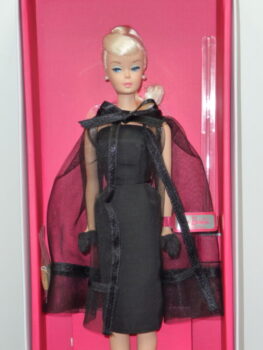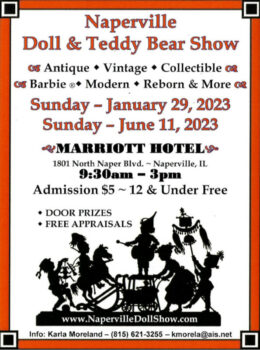 Every vintage Barbie clothing collector has felt that special kind of excitement that comes from identifying a rare original outfit. At the same time, reproductions—faithfully recreated by Mattel or third-party designers—offer their own appeal, giving more people access to classic looks without the higher price or fragility.
Every vintage Barbie clothing collector has felt that special kind of excitement that comes from identifying a rare original outfit. At the same time, reproductions—faithfully recreated by Mattel or third-party designers—offer their own appeal, giving more people access to classic looks without the higher price or fragility.
But telling the difference between an original and a reproduction isn’t always simple. Fabric textures, tag styles, and even how an outfit feels in your hands can make all the difference. Knowing how to spot the telltale signs of each helps collectors like you to build their wardrobe with confidence and clarity.
Why Reproductions Exist
Mattel’s Role in Reissuing Iconic Looks
Over the years, Mattel has reissued some of Barbie’s most famous early fashion. These reproductions tend to be carefully crafted and even labeled to distinguish them from originals, but when removed form their packaging, they can be difficult to tell apart. Collectors mostly appreciate these reissues for what they are: beautiful homages to Barbie’s golden years. They make iconic styles accessible again, while preserving the design legacy of Barbie’s early wardrobe.
Accessibility vs. Authenticity
It’s increasingly difficult to find originals, especially form the 1960s and early 1970s. Prices can be high, and condition varies. Reproductions offer a more affordable and sometimes sturdier alternative. For collectors just starting out, or for those looking to fill gaps in a display, they provide a satisfying middle ground. Still, distinguishing between the two is important. Whether you’re buying, reselling, or simply preserving your collection’s integrity, being able to tell what you have is part of the experience.
Key Ways to Identify an Original
Tags and Labels
One of the clearest indicators of an original Barbie outfit is the label. Early Mattel tags were often sewn into the side seam or waistband and featured specific fonts and stitching styles. Over the decades, tag designs evolved. Originals typically read “Barbie by Mattel” with variations depending on the year. The font may appear in cursive or block letters and can help date the piece.
On the other hand, reproductions often use slightly different tag placements or modern materials. Some even skip the internal tag altogether and rely on packaging for identification. If the outfit has no label, but it seems suspiciously pristine or modern feeling, it’s worth digging deeper.
Fabric and Construction
Authentic vintage Barbie clothes were made with fine, often natural-feeling materials: soft cottons, quality knits, and delicate velvets. Seams were carefully stitched and sometimes reinforced with bias tape. Fastenings were primarily metal snaps, not Velcro, and hems were typically sewn rather than glued. The clothes were manufactured in such a way that they’d last for decades if properly cared for.
While reproductions are still well-made, they tend to use more modern polyester blends and brighter dyes. They may feel stiffer or appear shinier. Metal snaps might be replaced with plastic or newer-style closures. Comparing known originals side-by-side with reissues can make these differences easier to see.
Packaging and Accessories
When outfits come with their original packaging or accessories, they’re easier to authenticate. Vintage boxed outfits often included specific inserts, hangers, or illustrated cards. Reproductions might replicate this presentation but with slight differences in font, print quality, or packaging material. Smaller accessories like shoes, hats, and handbags can also offer clues. For example, Barbie heels were often marked with “Japan” on the sole, whereas newer ones may not be.
Signs of a Reproduction
Mattel Markings and Modern Production Cues
Certain modern reissues include markings that clarify reproductions—especially when part of commemorative collections. You will likely find these on the packaging, tags, or product inserts. Phrases like “Collector’s Edition” or updated copyright information are indicators of modern origin. The finish of the clothing may also give it away. Reproductions can have a slight sheen, newer thread, or finishes that feel less delicate than vintage counterparts. Even the brightness or saturation of the fabric color can be a subtle clue.
Subtle Differences in Color and Fit
Even the most faithful reproductions can’t perfectly replicate decades-old textiles or stitching techniques. Colors may be slightly bolder or cooler than their vintage counterparts. Fit can also be a giveaway—many modern dolls have slightly different body proportions than early Barbie’s, so even if the outfit looks correct, it may drape differently. Collectors often notice things like sleeve lengths, collar shapes, pant widths that don’t quite match known originals. Over time, these small distinctions become easier to spot.
When Reproductions Make Sense
Budget, Condition, and Accessibility
Not every collector is trying to build a museum-quality collection. Many feel that reproductions offer a chance to enjoy Barbie’s most iconic looks without the stress of high prices or delicate fabrics. They can be handled more easily, displayed more freely, and often last longer under casual conditions. In cases where an original outfit is too damaged or rare to obtain, a reproduction is a perfectly acceptable substitute and a beautiful addition to any collection.
Mixing Repro and Vintage in One Collection
Plenty of collectors blend originals and reproductions seamlessly. What matters most is clarity: knowing what’s what and enjoying both for their unique contributions. Some choose to group outfits by era or style rather than by authenticity. Others prefer to label reproductions separately or keep them in their own display. The key is confidence. When you can distinguish between the two, you’re free to build your collection however you like—rooted in knowledge and driven by passion.
At Gigi’s Dolls and Sherry’s Teddy Bears, we have a large collection of Barbie dolls and clothing from all eras, including reproductions. We can help you differentiate between originals and reproductions if you want that. Contact us today to learn more about our selection and services!


